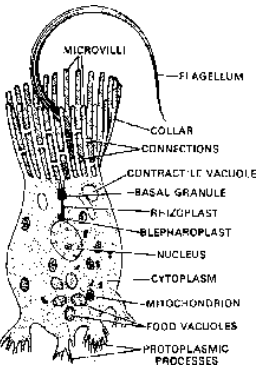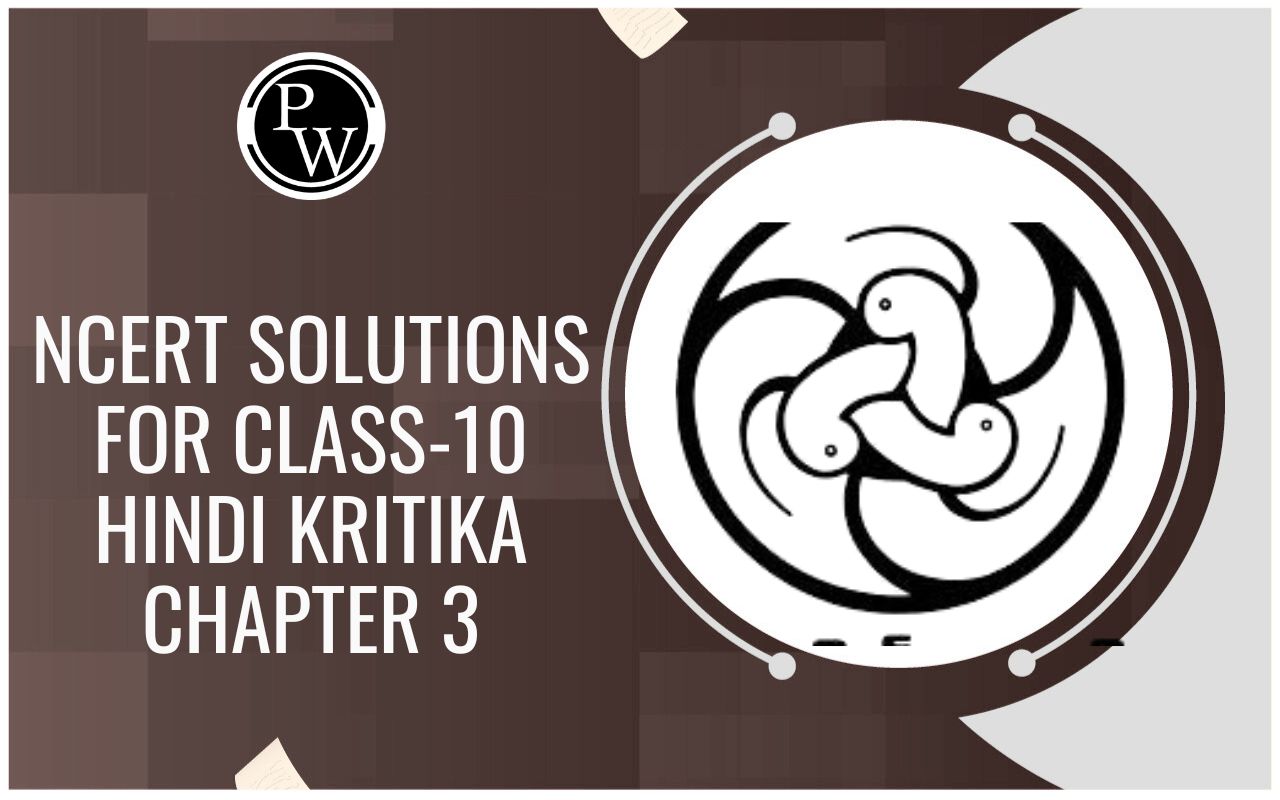
Phylum Porifera
Classification of Animals Non Chordates of Class 11
General Characters
This phylum includes lowest of multicellular animals commonly called sponges.
Term Porifera is coined by Robert Grant. Ellias placed sponges among animals. Robert Grant finally proved animal nature of sponges.
Study of sponges is called Parazoology.
Sponges are often placed under a separate group called “Parazoa” which means side animals.
Sponges have not given rise to any higher phyla so these are considered to be on a blind branch of evolutionary tree.
Sponges have originated from colonial choanoflagellates (protozoans) connecting link between protozoa & porifera is Proterospongia (protozoan)
Classification of phylum “Porifera” is on the basis of skeletal elements.
Sponges originated some 600 million years ago. About 10,000 species of sponges are present today. Sponges range from 1 cm to 1 m in size.
Characteristic features
Multicellular with cellular level of organization. Cell aggregate body plan and acoelomate. No distinct tissues or organs.
All sponges are aquatic mostly marine few freshwater. Family spongillidae of class. Demospongiae has nearly 150 fresh water species.
Adult sponges are sessile or sedentary and are found attached to rocks. Larvae of sponges are motile (sponges are sessile as adult but motile as larva.)
Body form vase like, cylindrical, tubular, cushion shaped etc.
These could be solitary ie present singly (Euplectella) or coloniol i.e. present in colony (Leucosolenia) [Scypha may be solitary or form a colony by budding]
Cells are loosely arranged and do not form definite layers, hence these are not truly diploblastic.
Body wall consists of two imperfect layers i.e. outer pinacoderm (epidermis) and inner choanoderm (gastrodermis) cells of these two layers can be interchanged.
Between these two layers is present a non cellular, non living gelatinous layer called mesenchyme or mesohyl layer. It is secreted by both pinacoderm and choanoderm. It contains fibres, spicules and wandering cells called amoebocytes.
Pinacoderm has two types of cells, pinacocytes and porocytes. Pinacocytes are flat polygonal cells with central bulge and narrow edges. These respond to external stimulus and are contractile. These can increase or decrease overall surface area of sponge body. Certain pinacocytes are modified to form myocytes around osculum (occasionally ostia). Certain pinacocytes are modified to form porocytes. Porocytes (pore cells) are large tubular cells with pore or ostium in their centre.
Choanoderm has choanocytes. These are also called collared flagellated cells or even nurse cells. (Sponges are the only multicellular animals having choanocytes proterospongia also has choanocytes). These are
collared & uniflagelate. These are used in feeding and for ensuring the flow of water within animal’s body by beating of their flagella. [Flagella of choanocytes maintain water current, captures food particles and even sperm]
Body cavity is called Spongocoel / Paragastric cavity / Atrium. It is a common chamber present in all types of sponges. Spongocoel communicates to outside by way of ostia and osculum.
Body wall is perforated by numerous pores called ostia. Ostia are inhalent pores and allow entry of water. These correspond to mouthlets. Ostia open directly or through a canal into the spongo coel. Osculum or
exhalent pore is the larger aperture which permits exit of water. So osculum is comparable or analogous to anus or cloaca. Osculum is surrounded by elongated and contractile cells called myocytes. These are
muscle like cells (not muscles) which regulate opening of osculum. (If caramine particles are placed over osculum these will be thrown away).
Middle layer mesenchyme is non living, jelly like and has fine dispersed spong in fibres, numerous spicules and wandering amoebocytes (amoeba like cells). Amoebocytes are of following types :
(a) Archaeocytes : These have blunt pseudopodia and abundant RNA. These are “totipotent cells” i.e. capable of forming any other type of cell. Even germ cells (ovum & sperm) develop from archaeocytes.
(These are similar to interstitial cells of cnidarians) and play important role in regeneration.
(b) Collencytes : Most of the amoebocytes have branching pseudopodia after united into a syncytial network. These are called collencytes. These form collagen like fibres of the mesenchyme.
(c) Chromocytes : These are coloured pigmented cells which impart colour to sponge body.
(d) Trophocytes : These receive partially digested food from choanocytes, and digest it completely. These also called nutritive cells or nourishing cells. These also distribute the digested food.
(e) Thesocytes : These store reserve food material (glycogen), so also called storage cells.
(f) Gland cells : These are attached to body surface by long strands & secrete a slimy & sticky substance.
(g) Germ cells : Ovum & sperm develop from archaeocytes though in some cases they have been stated to be modified choanocytes.
(h) Scleroblasts : Skeleton (spicule) forming cells. These are of two types
(i) Calcoblasts : secrete spicules of CaCO 3 (calcium carbonate) i.e. calcareaus spicules.
(ii) Silicoblasts : Secrete spicules of SiO 2 (silica) i.e. siliceous spicules.
(i) Spongioblasts : Secrete spongin fibres. Spongin is organic, horny, elastic substance. It is scleroprotein containing sulphur and chemically related to collagen. It has large amount of iodine. It is insoluble, chemically inert and resistant to protein digesting enzymes.
Body of sponges has an internal supporting skeleton made of calcareous/siliceous spicules or proteinaceous spongin fibres or both. (skeleton forms basis of classification)
All body systems i.e. digestive, respiratory, circulatory, excretory are absent.
Gas exchange and excretion occurs through general body surface. Excretory waste product is mainly ammonia (sponges are ammonotelic) Nutrition is holozoic. Food of sponges comprises diatoms, bacteria, planktons. etc. (Some sponges are filter feeders). Food particles enter canal system along with water. These are captured by flagella of choanocytes. Choanocytes digests the food partially and pass it to trophocytes in mesenchyme. Trophocytes digest the food completely (intracellular digestion) and distribute it. Reaction in food vacuole is first acidic and then alkaline. Thesocytes store reserve food material. Undigested food particles are leased out through osculom alongwith outgoing water.
Nervous system absent. Pinacocytes respond to external stimulus by contracting.
All sponges are hermaphrodite but cross fertilization is the rule.
Sexual reproduction by ovum and sperm. Asexual reproduction by Budding (external as well as internal), branching, fragmentation and reduction bodies.
Budding : In external budding numerous archaeocytes collect at surface and pinacoderm bulges out to receive them. The bud so formed grows in an individual. It either remains attached to parent individual or
mmula formation : All fresh water and some marine sponges (Ficulina, Tethya, Superites) have a regular and peculiar mode of asexual reproduction by internal buds, called gemmules.
A full grown gemmule is a small hard ball consisting of an internal mass of fodd-laden archaeocytes, surrounded by resistant chitinous covering strengthened with spicules and usually pierced at one end by an outlet called micropyle.
These enable the sponge to tide over unfavourable conditions such as cold, draught etc. Geinnules can remain dormant for many years. These are released into water and travel kilometers of distance. On arrival of favourable conditions these develop into adult sponge. Gemmules help in dispersal of sponge colony.
Formation of reduction bodies : Many fresh water and marine sponges disintegrate in adverse conditions. Ailing sponge will usually collapse leaving small rounded balls, called reduction bodies. Each body consists of internal mass of archaeocytes covered externally by a pinacoderm. When favourable conditions return, these reduction bodied grow into complete new sponge.
On the basis of skeleton (skeletal elements), phylum porifera is divided into 3 classes :
Class I : Calcarea (Calcospongiae)
Exclusively marine forms inhabiting shallow water.
Skeleton consists of calcareous spicules.
Choanocytes relatively large.
Canal system : Ascon or sycon type.
ex : Leucosolenia, Sycon, Clathrina, Grantia, Scypha
Class II : Hexactinellida (Hyalospongiae)
All marine forms inhabiting deep water. (Deep sea water sponges)
Skeleton : Siliceous, six-rayed; commonly called glass sponges.
Choanocytes small.
Canal system : complex, ascon/sycon type.
ex : Euplectella (Venus flower basket), Pheronema (Bowl sponge), Hyalonema (Glass rope sponge).
Class III : Demospongiae
Mostly marine, few fresh water.
Skeleton : mostly spongin fibre.
Choanocytes small.
Canal system : Leucon type.
ex : Spongilla (fresh water sponge); Cliona (Boring sponge or Sulphur sponge). Euspongia, chalina, oscarella.


Fig. Electron microscopic Fig. A porocyte and various types of amoebocytes of mesophyl ultrastructure of choanocyte
System of pores chambers & canals in the body of sponge through which water circulates in order to meet various biological requirements of sponge body.





